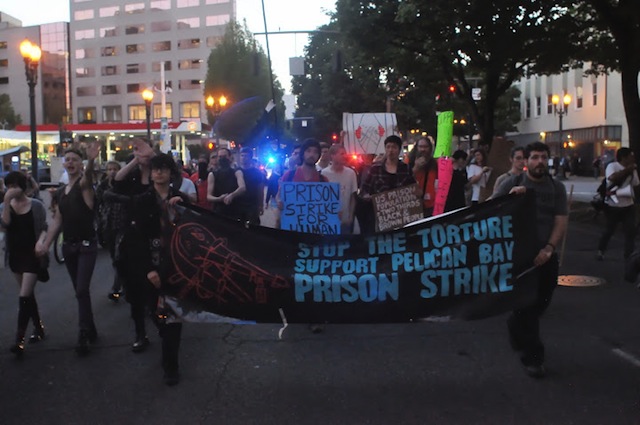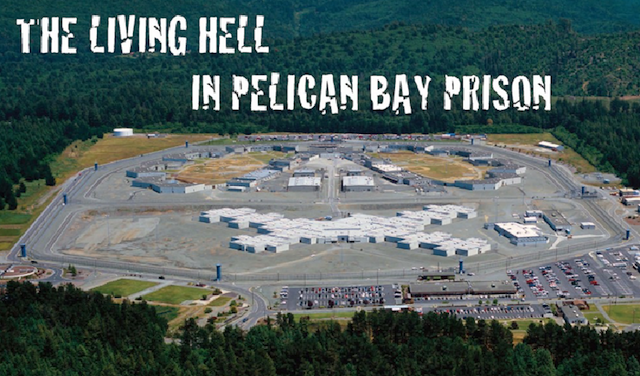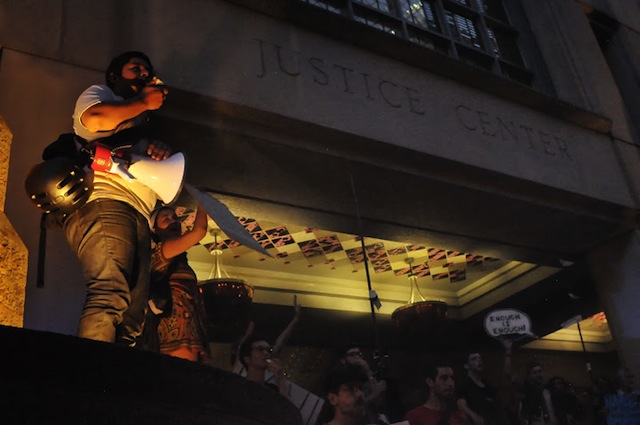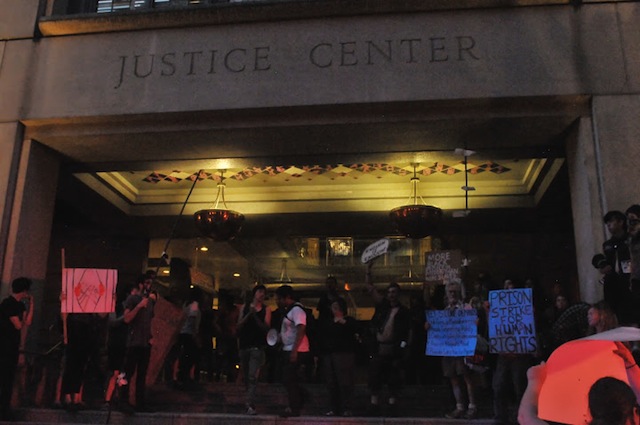On July 8th in Chapman Square over 100 people joined numerous rallies around the country in support of the Pelican Bay Prisoners Hunger Strike. The hunger strike–the third called by inmates in Pelican Bay prison in California–was called over the same demands that propelled the other two strikes. Those demands are the elimination of group punishments; abolition of allowing prisoners to get out the Security Housing Unit (SHU) for providing information on gang activity; fulfillment of the US commission on Safety and Abuse in Prisons’ recommendations on solitary confinement; provision of adequate and nutritious food; and expansion and provision of constructive programs from indefinite SHU inmates.
During the other two hunger strikes–which by many estimates had as many as 12,000 inmates refusing meals–the California Department of Corrections and Rehabilitation (CDCR) stated it would said it would meet the prisoners’ demands. However, prisoners still endured the same inhumane treatment, and thus this third hunger strike was called for July 8th. On its first day, at least 30,000 prisoners throughout California’s prison system did not eat and engaged in work actions. Support for the hunger strike spread to prisons in Oregon and Washington.
At the rally numerous speakers talked about the history, injustice, and purpose of the prison industrial complex in the United States. The modern prison system grew out of the end of chattel slavery when after the Civil War that system of attempting to control Black people’s movement and labor, as well as ward off the danger of their rebellion, disappeared, but the threat to the white ruling class’ wealth and power remained.
Itztli of Housing is for Everyone (HIFE) and Gente Indigena reminded the audience that the 13th Amendment to the US Constitution did not completely outlaw slavery, but rather, kept it alive for prisoners. He also noted that in the land of the free there exists the biggest prison population in the world, one disproportionately composed of people of color, and designed to keep them in roughly the same state as slaves. “The United States has the highest incarceration rates and largest prison population in the world– 2.3 million prisoners,” he said. “China has the second largest, with 1.6 million prisoners, even though they have four times as many people. The problem is not that Americans are breaking the law more, it’s that the U.S. prison system is a tool for those in power to maintain control and make money off of those without power.”
Most people held in SHU are in solitary confinement. Their cells are tiny–8 feet by 10 feet. They have no windows, and prisoners spend at least 22 hours a day in them. The only view is through a perforated steel door, allowing for the sight of a concrete wall. Food comes twice a day, deposited through a slot in the cell door. Prisoners must be allowed five hours of outdoor exercise a week. This takes place in an area about the length of three cells, under a partially open roof.
According to statistics released by the California Department of Corrections and Rehabilitation (CDCR) in 2011, of the 1,111 people held in the SHU over 513 of them had served ten or more years in the SHU. Of those, 78 had been in the SHU for twenty or more years. 544 people had been in the SHU for more than five years, but fewer than ten.
It’s a textbook definition of cruel and unusual punishment, and by any rational standard would be considered torture.
But with oppression comes resistance. Itztli noted how much effort it took for the prisoners to organize this strike, and then asked the crowd to consider how “dehumanized these people are that they are willing to put their lives on the line.”
Maribel Gomez, who is from Honduras, spoke about her son who is in jail in Oregon. He has spent time in solitary confinement, and when she recently told him that she would be speaking at this rally and wanted him to describe life in prison he told her, “It’s sadness. It’s loneliness.” Gomez then said how when she lived in Honduras many people who committed crimes were given help, not jail time. The point was clear: in the United States, particularly if you are a person of color or poor, the system is designed not to question why people commit crimes, and it is certainly not meant to reform prisoners so they can become productive citizens upon release.
Jose noted how the prison system is just another example of people of color being treated as second class citizens. But, he reminded the crowd, the organizing of the prisoners across various lines such as ethnicity and religion was proof that the “prison industrial complex has not won” and that “we are winning.”
Prior to the rally, about seven organizers and supporters assembled a structure with the same minuscule dimensions of a SHU cell, two police officers approached and said it had to be removed due to restrictions against temporary structures in public parks. As organizers and police discussed the issue, the crowd began growing. One officer became heated in his demand for dismantlement, but soon the numbers in Chapman Square apparently swelled to a greater ration than allowed for his insistence, and he moved to another area of the park to commiserate with his superiors.
It was a small example of the power of numbers, and after the rally, what was billed as Noise Demo took to the streets, marching unpermitted through downtown Portland for 90 minutes, educating people about the hunger strike. Marchers chanted, “Our passion for freedom is stronger than your prisons!” Two police cars followed the march but did little more than occasionally blare their horns.
As the rally wound up on the steps of the Justice Center, Adam Carpinelli of the Oregon Jericho Movement and Radical Prisoner Support Portland (RPSP) began reading a letter of solidarity from a prisoner at the Snake River prison in Oregon. Not long into the letter, a cry erupted from the crowd. Just up the street on the corner of SW 3rd and Madion, one of the ralliers–Anthony Michael Scherf–was arrested by the police, handcuffed, shunted into a patrol car, and taken away in no more than 30 seconds.
The crowd quickly moved to the spot where Scherf was arrested and began engaging the police. Andrew Bart of RPSP urged the crowd to focus on why it had come out, which was not to engage the police. “We need to build organizations,” he said, “so the next time that this happens, we can stop it dead.” His words had the desired effect, and people regathered, marching three times around the Justice Center.
About 15 people remained after the rally, awaiting Scherf’s release, which came around 2 AM. The next day Scherf appeared in court. He was originally charged with disorderly conduct, throwing lighted material, and possession of explosives and bottle bombs. All but the disorderly conduct charge, for which there were two counts, were dropped.
For more information on the Pelican Bay Prisoner Hunger Strike, go to: http://prisonerhungerstrikesolidarity.wordpress.com/











1 comment for “People Rally Around the Country in Support of Pelican Bay Prison Inhumanity”